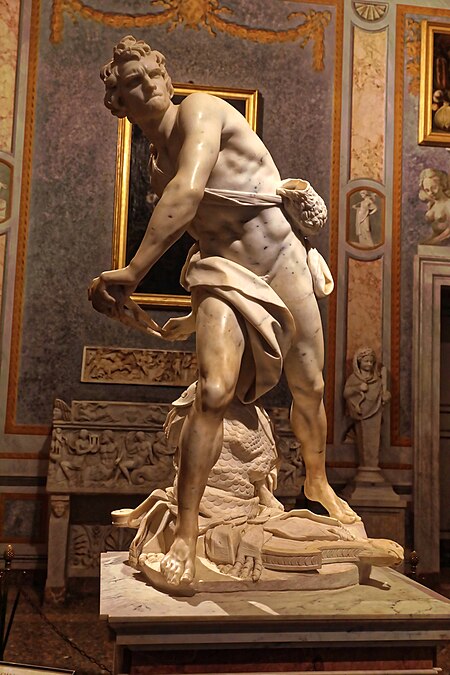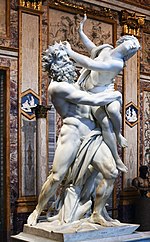David (Bernini)
1620s sculptures1624 worksBernini sculptures in the Borghese CollectionMarble sculptures in ItalyMusical instruments in art ... and 3 more
Sculptures by Gian Lorenzo BerniniSculptures depicting DavidSculptures of men in Italy

David is a life-size marble sculpture by Gian Lorenzo Bernini. The sculpture was one of many commissions to decorate the villa of Bernini's patron Cardinal Scipione Borghese – where it still resides today, as part of the Galleria Borghese. It was completed in the course of seven months from 1623 to 1624. The subject of the work is the biblical David, about to throw the stone that will bring down Goliath, which will allow David to behead him. Compared to earlier works on the same theme (notably the David of Michelangelo), the sculpture broke new ground in its implied movement and its psychological intensity.
Excerpt from the Wikipedia article David (Bernini) (License: CC BY-SA 3.0, Authors, Images).David (Bernini)
Piazzale del Museo Borghese, Rome Pinciano
Geographical coordinates (GPS) Address Nearby Places Show on map
Geographical coordinates (GPS)
| Latitude | Longitude |
|---|---|
| N 41.914 ° | E 12.492 ° |
Address
Piazzale del Museo Borghese
Piazzale del Museo Borghese
Rome, Pinciano
Lazio, Italy
Open on Google Maps










